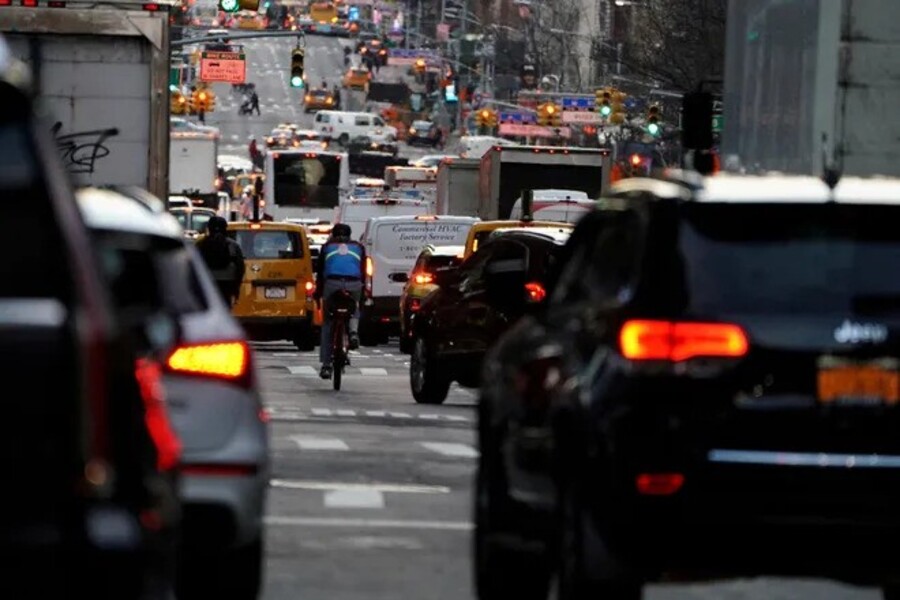The debate over whether to own a car or rely on public transportation resonates deeply with many Americans, especially in bustling urban centers where costs and commute times can vary significantly. Recent research from Point2Homes, a real estate research platform, highlights the true financial and time-related trade-offs commuters face when deciding between driving and using public transit. The study reveals that car ownership may bring convenience and time savings for some, but it comes with a hefty price tag that can strain household budgets, particularly for renters and lower-income earners.
According to the study, the average American household spends approximately $8,137 annually on car ownership. This figure accounts for fuel, insurance, maintenance, parking, and other vehicle-related expenses. For homeowners, this cost represents around 8% of their income. However, the impact is even more pronounced for renters, who typically allocate about 15% of their yearly earnings just to keep a car on the road. These figures highlight a significant financial burden that is often overshadowed by the perceived convenience of owning a vehicle.
In stark contrast, the annual cost of using public transportation is far more affordable, averaging less than $1,000 per year. This means that by choosing to rely on buses, trains, or subways, commuters can potentially save over $7,000 each year. Andra Hopulele, the study’s author, underscored the importance of this disparity in an interview with USA TODAY. “This financial imbalance underscores how transit affordability can play a key role in household budgeting, particularly for lower- and middle-income renters,” she said. “The tradeoff is clear: significant cost savings versus modest time gains. For budget-conscious commuters, especially renters, public transit can offer meaningful financial relief.”
The study also identified cities where ditching the car yields the most significant financial benefits. Four of the top five cities with the highest annual savings are in California. San Francisco leads the way, with potential savings averaging $10,188 per year for commuters who choose public transit over car ownership. New York follows with an average savings of $9,538, while San Diego commuters could pocket around $8,676 annually. Los Angeles and Boston also rank high, with annual savings of $8,436 and $8,195, respectively. Other cities like Washington, D.C., Philadelphia, Jacksonville, San Jose, and Chicago also show substantial potential for cost savings when choosing public transit. For many urban residents, these figures represent more than just numbers — they can make a meaningful difference in their overall financial well-being, especially given the rising cost of living in many major cities.
However, the picture is not entirely one-sided. For many Americans, time is a precious commodity, and car ownership often translates to substantial time savings compared to public transit. The Point2Homes study delved into this by analyzing the average time saved by drivers in major U.S. cities compared to those using public transit. In Las Vegas, for instance, drivers save an average of 52.3 minutes per day on their commute — the equivalent of reclaiming about 9.1 days per year. San Jose commuters gain an average of 50.8 minutes daily, or about 8.9 days annually. Other cities like El Paso, Fort Worth, San Antonio, Phoenix, Detroit, Indianapolis, San Diego, and Columbus also show significant time savings for drivers.
These statistics highlight the complexity of the car-versus-transit debate. While financial savings from using public transportation are compelling, the tradeoff in time may deter some commuters, particularly those with demanding schedules or long distances to cover. The decision to own a car, then, becomes a personal calculus of balancing financial responsibility against time efficiency and convenience.
The impact of these decisions extends beyond personal finances and convenience. From an environmental perspective, relying on public transportation helps reduce greenhouse gas emissions and alleviate urban traffic congestion. Cities investing in public transit infrastructure can promote more equitable access to mobility for lower-income populations, potentially reshaping entire communities by connecting people to jobs, schools, and essential services.
Moreover, the choice between car ownership and public transit often intersects with broader societal issues, such as housing affordability, urban planning, and social equity. As urban living costs continue to rise, many residents are forced to weigh the trade-offs between living closer to work with higher rent or living farther away with cheaper housing but higher transportation costs. Policymakers can use the insights from studies like this to design more sustainable and inclusive transportation systems that benefit all residents, not just those who can afford a car.
Ultimately, deciding whether to own a car or embrace public transportation is not a one-size-fits-all choice. Each commuter must consider their priorities, including income, lifestyle, commuting needs, and the availability of reliable public transit. For some, the time savings of driving might justify the added expense, while others may find that the financial relief of public transit far outweighs the inconvenience of a longer commute.
What’s clear from the Point2Homes study is that the potential for significant savings exists in many of the country’s largest and most expensive cities, making public transit an attractive option for those looking to trim their household budgets. At the same time, the substantial time gains from driving highlight the continued value of car ownership for many working Americans.
As cities continue to evolve and invest in new transportation infrastructure, the conversation about whether to own a car or rely on public transit will remain a central issue for millions of Americans. For now, the choice is a personal one, but one that every commuter should make with a full understanding of the financial and time implications involved.

